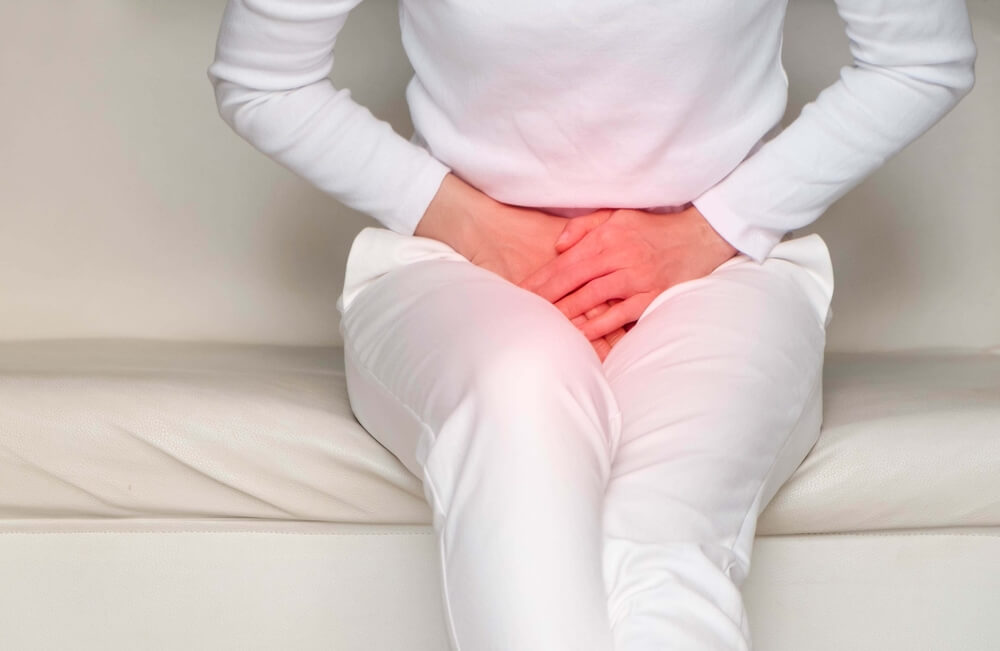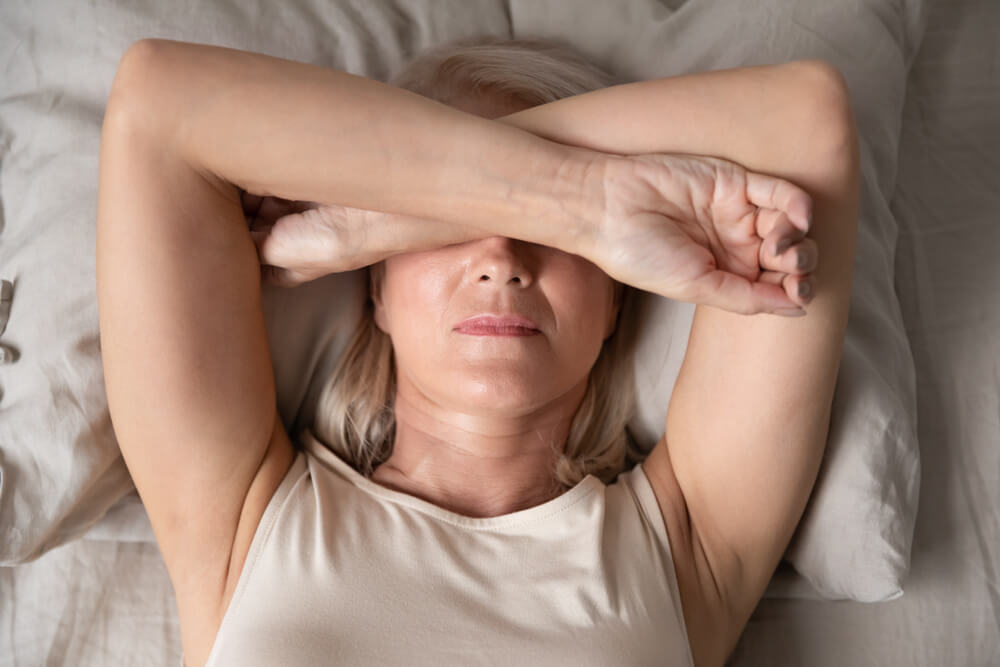Menopause is a normal life stage for women that marks the end of their reproductive years. Their bodies experience considerable hormone changes as they age, resulting in various physical and mental adaptions. A decrease in estrogen levels, one of the significant differences that take place during menopause, can have a considerable effect on the pelvic floor. The bladder, uterus, and rectum are supported by a group of muscles known as the pelvic floor muscles. Due to the drop in estrogen levels, these muscles may deteriorate, causing many symptoms such as vaginal prolapse, urine incontinence, and diminished sexual function.
If you are going through menopause and displaying signs of vaginal prolapse, dryness, or other pelvic floor dysfunction signs, do not worry. You are not alone. Women’s bodies change significantly as they age, and our caring staff at University Park OBGYN is here to help each and every one of them with those changes. Fortunately, there are methods for controlling them and improving your quality of life. Our skilled team of medical professionals is committed to assisting women in navigating menopause with ease and self-assurance.
In this blog post, we’ll explore the effects of menopause on the pelvic floor muscles and discuss the importance of pelvic floor exercises when it comes to treating this issue. Keep reading to find out more.
Hormone Changes During Menopause
The hormone estrogen, which is produced by the ovaries, is essential for numerous body processes, including the menstrual cycle. As mentioned previously, the pelvic floor muscles may change due to the drop in estrogen levels that occurs after menopause, among other physical changes. Reduced estrogen levels can cause these muscles, which support the bladder, uterus, and rectum, to deteriorate. Numerous symptoms may occur as a result, including fecal incontinence, pelvic organ prolapse, and urinary incontinence.
Additionally, you may suffer from vaginal dryness, which is a common sign of the change. When levels of estrogen fall, the healthy and moisturized vaginal tissues might become dry and thin. Sexual activity can become painful or unpleasant, which can be both physically and mentally challenging for female patients.
Symptoms of Weakened Pelvic Floor Muscles

Hormonal changes during menopause can significantly impact the pelvic floor muscles, leading to a range of symptoms that can affect a woman’s quality of life. Some of the most common symptoms include:
- Urinary incontinence – The involuntary flow of urine that might happen when simply doing something, coughing, sneezing, or laughing is known as urinary incontinence. It is a typical sign of pelvic floor muscle weakening and can make women feel extremely self-conscious.
- Fecal incontinence – This term is used to describe the involuntary feces or gas leaks that can happen when the pelvis is weak. Additionally, it can be quite uncomfortable and detract from one’s self-esteem.
- Pelvic organ prolapse – It happens when the muscles in the pelvic floor become too frail to hold the bladder, uterus, or rectum. This may result in symptoms like vaginal bulging, pelvic pressure, and pain.
- Painful intercourse – Sexual contact or any form of penetration can be unpleasant or even painful when the vagina is dry and the surrounding tissues thin out. A woman’s intimate relationships and sex life may suffer as a result of this issue.
- Decreased libido – It is only natural to have a reduced sexual desire when experiencing such symptoms. Also, hormone changes can be to blame as well.
It’s essential to be aware of these signs and speak to your doctor if you notice them. There is no need to be embarrassed because they can be treated with the right approach.
Vaginal Dryness and the Pelvic Floor
Many women who are going through menopause experience vaginal dryness as a common sign. As estrogen levels fall, the vaginal tissues become thinner, drier, and less elastic, which leads to this medical condition. Dryness in the genital area can reduce a woman’s quality of life because of uncomfortable, itchy, painful, and burning sensations, especially during sexual activity. It can also have an impact on the pelvis. Because the pelvic floor muscles and vaginal tissues are intertwined, a drop in estrogen levels may cause both to deteriorate and shrink. This may cause many uncomfortable symptoms, including vaginal prolapse.
Fortunately, there are several ways to deal with vaginal dryness and pelvic pain during menopause. One choice is vaginal moisturizers or lubricants, which can aid in easing pain and enhancing sexual performance. You can buy them in drugstores or your local pharmacies since they are available over the counter. Another option is vaginal estrogen therapy, which can aid in restoring the strength and elasticity of the pelvic floor muscles and the health and flexibility of the vaginal tissues. A healthcare professional can prescribe vaginal estrogen treatment, which comes in various forms, such as lotions, pills, and rings.
In addition to these treatments, pelvic floor muscle exercises can also effectively reduce symptoms of vaginal dryness and strengthen the pelvic floor muscles. Kegels can be done anywhere, anytime, and they involve contracting and relaxing the muscles that support the bladder, uterus, and rectum. In the next paragraph, we will discuss the importance of pelvic floor therapy for those in menopause.
Symptoms of Vaginal Prolapse
When pelvic organs, including the bladder, uterus, or rectum, protrude into the vaginal canal, the issue is known as vaginal prolapse. This can happen if the pelvic floor’s muscles and tissues weaken or are injured, which can happen in menopause too. It can cause various symptoms, such as a feeling of pressure or heaviness in the pelvic area, discomfort or pain during sexual activity, urine incontinence or trouble emptying the bladder, and constipation or trouble passing stool.
It’s necessary to discuss vaginal prolapse with your gynecologist if you’re displaying any of the signs. They can do a physical examination, assess the prolapse’s severity, and create a treatment strategy that is specific to your requirements. Treatment options for vaginal prolapse include surgical treatments like hysterectomy or restoration of the pelvic floor muscles and conservative therapies like pelvic floor exercises. Based on the severity of your symptoms and your unique health situation, your healthcare practitioner can assist you in choosing the appropriate course of action.
Treatments Options

The symptoms of vaginal prolapse and weakened pelvic muscles may be managed with a number of different treatments while still preserving reproductive health. For example, pelvic floor treatment can be an efficient technique to tone and strengthen the muscles while reducing symptoms like pelvic discomfort and urinary incontinence. Some women may also choose hormone replacement treatment (HRT), especially if they are suffering from severe symptoms brought on by a decrease in estrogen. Depending on the severity of the symptoms and the patient’s condition, additional treatments could involve medication, pessaries, or surgical procedures. Women can choose the optimal course of therapy based on their unique requirements and objectives by consulting closely with their doctor.
Conclusion
Pelvic pain during menopause can be a frustrating and uncomfortable symptom that affects many women. However, it is essential to know that there are strategies and treatments available to manage not only this sign but others as well. Whether it’s through hormonal therapies, pelvic floor exercises, or other treatments, women have options for managing the effects of menopause on their bodies and continuing to live active, healthy lives.


